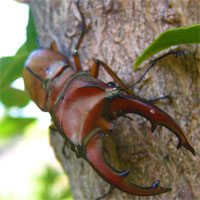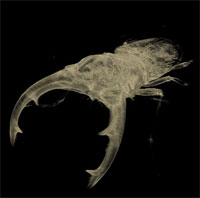Member list
Current members
- Lan-Wei Yeh
- Ecology and evolution of Taiwanese Carabus ground beetles.
- Chung-Hsin Huang
- Ying-Yuan Lo
- Systematics, Behavior and Evolution of Lynx Spiders.
- Leocris Batucan Jr.
- New Species and DNA Barcoding of the Mayfly (Ephemeroptera) in Mt. Malindang, Mindanao, Philippines.
- Chun-Yu Lin
- Parasitoid Wasps of Damselflies; Phylogenetics and Evolution Histories of Treehoppers
- Hsu-Yi Lin
- Fighting Behavior of Odontolabis siva parryi Stag Beetles
- Sheng Lin
- Transcriptome Profiling Psolodesmus mandarinus mandarinus Damselfly
- Pei-Hsuan Chang
- Thermal Adaptation and Habitat Preference of Psolodesmus mandarinus Damselfly
- Min-Chen Lin
- Disruptive Camauflage of Colors of Pachyrhynchus Weevils.
- Masahiko Tanahashi
- Ecology and Evolution of Pachyrhynchus Weevils.
- Su-Ping Lin
- Symbiotic Yeasts of Stag Beetles
- Jun-Ying Wang
- Conservation of Mortonagrion hirosei Damselflies
- Chin-Han Hsiao
- Fighting Behavior of Rhaetulus crenatus Stag Beetles
- Wei-Zhe Tseng
- Systematics and Evolution of Weevils
- Cheng-Tse Yung
- Maternal Gift of Pachyrhynchus sarcitis Weevils
Past members
- Jo-Fan Wang
- Territorial behavior, trait evolution.
- Yu-Hsun Hsu
- Mating strategy, behavioural ecology, molecular ecology, population genetics, molecular phylogenetics, biostatistics.
- Yi-Shou Yang
- Reproductive Isolation of Psolodesmus mandarinus subspecies.
- Wataru Kojima
- Evolution of male sexual traits in Taiwanese scarab beetles.
- Zhen-Yi Chen
- Fighting behavior and reproductive strategy of stag beetles.
- Teng-Yu Liu
- Fighting behaviour and life history observation of a stag beetle Rhaetulus crenatus crenatus.
- Princess Angelie S. Casas
- Insect Diversity and Evolution
- Lu-Yi Wang
- Defense Mechanism of Pachyrhynchus weevils.
- Hui-Yun Tseng
- Aposematic coloration, island biogeography.
- Yu-Jen Yu
- Variation and Adaptation of wings.
- Yen-Ting Chen
- Systematics and evolution of insects.
- Yun-Chieh Cheng
- Damselfly larval diet, molecular evolution.
- Tai-Chia Chiang
- The effect of aposematic colors of Pachyrhynchus weevils on avian predators.
- Yong-Chao Su
- Behavioral ecology, sociobiology, population genetics, and molecular phylogenetics.
- I-Ting Hsiao
- Variation of genitalia in Euphaea amphicyana.
- Jyun-Huei Huang
- The fighting behavior of a stag beetle, Rhaetulus crenatus.
- Shi-Ting Wu
- Membracis Phyllotropis.
- Chiao-Wei Lin
- The fighting behavior of a stag beetle, Rhaetulus crenatus.
- Wei-Liang Xiao
- Variation of wing veins in Euphaea amphicyana.
- Hung-Nien Chen
- 1. The effect of typhoon on survivalship of Matrona cyanoptera. 2. Modes of phenotypic variation in Euphaea amphicyana.
- Chu-Yen Cheng
- Phylogeography of a Philippine's treehopper, Leptocentrus reponens.
- Che-Yu Kuan
- Variation of mandibles in stag beetles.
- Yat-Hung Lee
- Speciation of Euphaea damselflies.
- Ming-Yu Chen
- Phylogeography and population history of the treehoppers, Centrochares horifficus from the Philippines Archipelago.
- Shao-Chang Huang
- Visual Communication of Matrona cyanoptera
- Jen-Pan Huang
- Population Genetics and Phylogeographic Analyses of Formosan Damselfly, Euphaea Formosa (Insecta: Odonata: Euphaeidae) from Taiwan
- Wei-Yun Chen
- Molecular and Phylogenetic Characterization of Endosymbiotic Bacteria of the Froghopper, Okiscarta uchidae (Insecta: Hemiptera: Cercopidae)
Visiting scholars and students
- Jillian del Sol
- Behavioral Ecology; Mating System Ecology; Weapon Ecology and Evolution; Evolutionary Biology
- Ian Dela Cruz
- New Species and DNA Barcoding of the Stonefly (Plecoptera) in Mt. Malindang, Mindanao, Philippines.
- Shinya Komata
- Ecology & Evolution of Wing Polymorphism in a Mimetic Swallowtail Butterfly, Papilio memnon.
- Vanitha Williams
- Predatory potential of waterbug, Diplonychus rusticus and dragonfly, Diplacodes trivialis on mosquito larvae.
- Marina Vilenica
- Dragonfly composition (Insecta, Odonata) in wetland area of Turopolje region, Croatia
- Klaas-Douwe 'KD' B. Dijkstra
- History, diversity and identification of dragonflies and damselflies (Odonata).
- Erin McCullough
- " Diversification of weapon form: aerodynamic costs of beetle horns.
- Ashley E. King
- Intrasexual combat and intersexual antagonistic co-evolution in horned beetles.
Chung-Hsin Huang

Title
Master Student 2010-2013; TIGP Biodiversity PhD Student 2021-
Species: Cyclommatus mniszechi

Project
Master topic: Flucuating Asymmetry and Developmental Asymmetry of Cyclommatus mniszechi; PhD topic: Evolution of Mandible Morphology and Fighting Behavior in Stag Beetles
Abstrct
E-mail:huangchunghsing@gmail.com

Cyclommatus mniszechi CT scan image.
Visualization and Interactive Media Laboratory of NCHC
Master Topic
Fluctuating Asymmetry and Developmental Instability of a Stag Beetle, Cyclommatus mniszechi (Coleoptera, Lucanidae)
Abstract
Developmental homeostasis is a mechanism that can maintain the development of organisms toward expected phenotypes. Developmental homeostasis of phenotypic traits can be maintained by two processes, including canalization and developmental stability (DS). Canalization reduces among-individual phenotypic variation, while DS reduces within-individual variation in traits. Fluctuating asymmetry (FA) of phenotypic traits is regarded as the outcome of developmental instability (DI) of an organism under random environmental or genetic noise. Nevertheless, the relationships among DS, canalization and FA, and the relative importance of canalization and DS in maintaining developmental homeostasis of a trait are still unclear. Møller and Pomiankowski (1993) proposed a hypothesis concerning the pattern of phenotypic variation and FA under different modes of selection. It predicted that under directional natural selection, the FA of a phenotypic trait increases. In contrast, stabilizing selection decreases the FA of a phenotypic trait. The FA has a positive relationship with trait size under directional selection, while the extreme sizes of a trait has the largest FA under stabilizing selection. The exaggerated mandibles of stag beetles are secondary sexual traits, used as weapons in territorial fights and considered to be under strong directional sexual selection. I used a stag beetle species, Cyclommatus mniszechi, as the study organism to investigate the relationships among DS, canalization and FA and to study the patterns of FA in a various morphological traits presumably under different selection schemes. I divided individuals from the same families of stag beetles into high and low nutritional treatments, representing habitats with low and higher environmental noises, respectively. I compared the FA of mandibles and other morphological traits and predicted that the mandible, which is under directional selection, should have greater FA than traits under stabilizing selection. I used mixed model ANOVAs to analyze the pattern of FA. The preliminary results indicated that the mandibles of both high and low nutritional treatments are directional asymmetry (DA). The thorax, elytra and femur of foreleg showed FA. However, the head width of low nutritional treatments showed a pattern of DA, while that of high nutritional treatment is FA. The mandibles of 3rd instar larvae presented a pattern of DA. Mandibles of larvae and adult males show DA that means mandibles is under functional constraint. The measurement of head traits needs to be reconsidered.
PhD Topic
Weapon shape difference predict fighting style?A case study of three different stag beetles
Abstract
The divergent fighting contexts hypothesis suggests that the difference of where and/or how species use their weapons shapes the diversification of animal weapon. However, the relationships between weapon shape, fighting behavior and the evolution of weapon diversity are still not clear. The study of dimorphic stag beetle Cyclommatus mniszechi showed that male morphs have different proportions of fighting behavior elements in size-matched contests. The previous studies of fighting behavior of four stag beetle species with different mandible shapes showed similar behavior elements. This study will focus on three stag beetles, C. mniszechi, Dorcus yamadai, and Lamprima adolphinae, which have different mandible shapes (curve down, flat and curve up, respectively). The relationship between shape difference and the fighting behaviors of these three species will be examined. We expect that the fighting styles of the three species should be lift (C. mniszechi), push (D. yamadai), and pry (L. adolphinae).